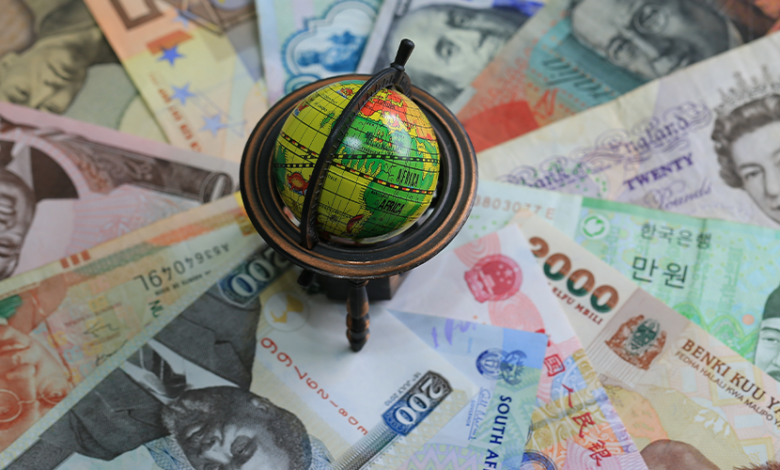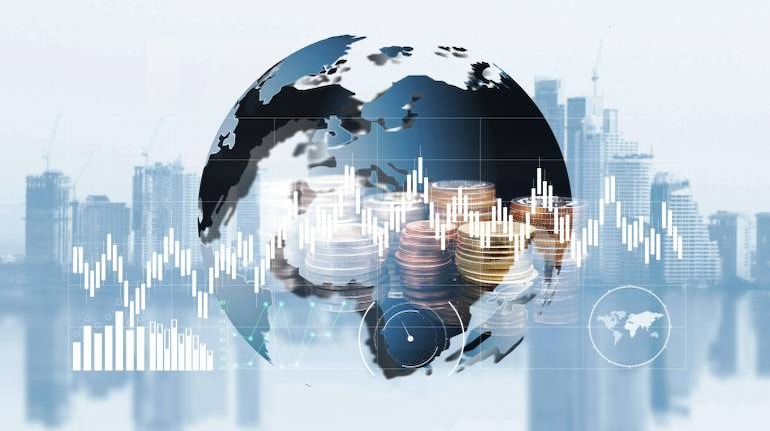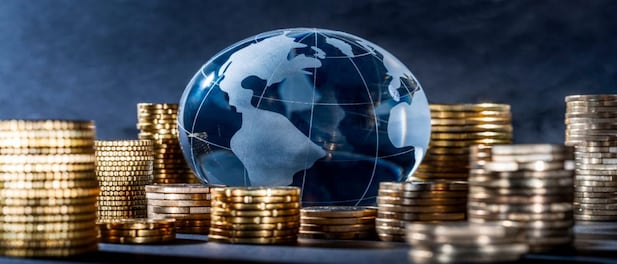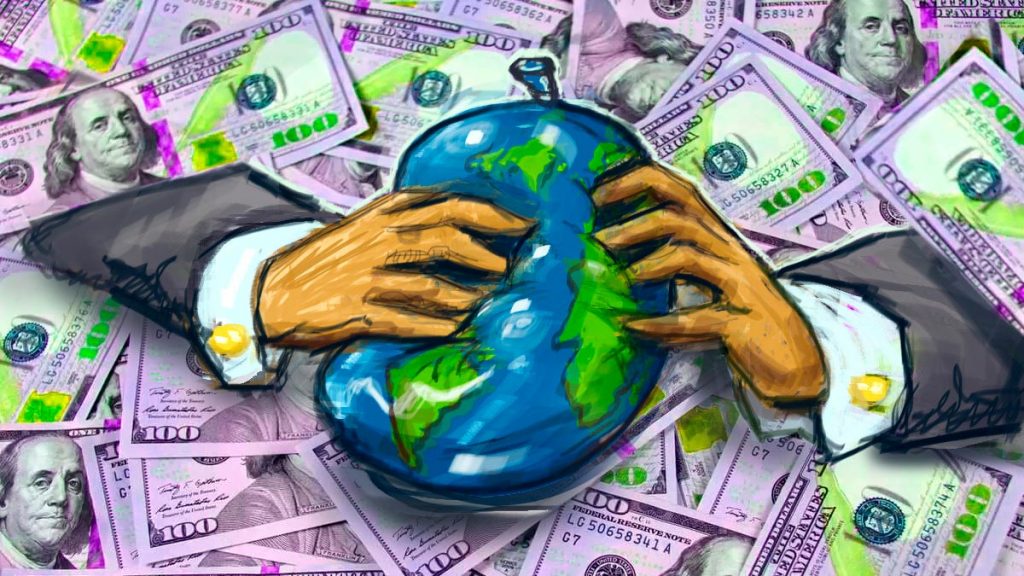The Looming Storm, A $500 Billion Corporate-Debt Crisis Threatens the Global Economy.
The global economy is presently witnessing a significant increase in corporate bankruptcies, leading experts to raise concerns about the potential severity of the fallout. However, what sets this wave of bankruptcies apart from previous cycles is the mounting debt burdens that have accumulated over the past few years. With central banks exerting upward pressure on interest rates, many companies may find it increasingly difficult to repay their debts.

A $500 Billion Corporate-Debt Storm Builds Over Global Economy.
Data compiled by Bloomberg indicates that a storm of corporate-debt distress, amounting to over $500 billion, is already making its presence felt across the globe. This figure is expected to rise further, deepening concerns on Wall Street and the consequences of this distress could potentially slow economic growth and strain credit markets that are still recovering from significant losses.
Debt Burdens and Cheap Money
Underneath the surface of these bankruptcies lies a more troubling issue – the significant debt loads accumulated during historically low-interest rates.
As central banks worldwide raise interest rates and indicate a longer-term stance, these debt burdens become increasingly burdensome for companies. Many businesses took advantage of the easy availability of cheap credit to delay the consequences of their financial challenges.

Vulnerability of Corporate Credit
In the United States alone, high-yield bonds and leveraged loans owed by riskier and less creditworthy businesses more than doubled from 2008 to $3 trillion in 2021 before the Federal Reserve initiated substantial rate hikes.
Similarly, the debts of non-financial Chinese companies have surged relative to the size of the nation’s economy. In Europe, junk-bond sales have increased by over 40% in 2021. These debt levels have contributed to a looming wall of debt, with $785 billion coming due in the next few years.
Growing Challenges
With a slowdown in China and Europe, coupled with the expected continuation of rate hikes by the Federal Reserve, the ability of businesses to meet their debt obligations may be compromised. Distressed bonds and loans in the Americas have already surged by over 360% since 2021, indicating a potential cycle of widespread defaults on the horizon.
Potential Impact on the Economy
Even a modest increase in defaults can pose challenges to the overall economy. Rising defaults could lead to a pullback in lending by investors and banks, exacerbating financial distress for more companies as their financing options diminish.
Further, bankruptcies would have a detrimental effect on the labor market, leading to job losses and a subsequent decline in consumer spending.

The Implications of Rising Defaults
The current surge in corporate bankruptcies indicates that defaults are becoming a more prevalent issue. According to Richard Cooper, a partner at Cleary Gottlieb, a top law firm specializing in corporate bankruptcies, this cycle feels different compared to previous ones.
The increase in defaults is a cause for concern as it puts pressure on the global economy. Defaults not only impact the companies themselves but also have broader repercussions for credit markets and economic growth.
The Design of Monetary Policy
The intentional tightening of monetary policy by central banks is partially responsible for the rising tide of distress. As inflation surged unexpectedly, central banks have aggressively reduced cash flow in the financial system to curb economic growth. While this approach aims to restore balance, it inevitably leads to the failure of some businesses. The intentional nature of this tightening differentiates it from other economic cycles.
Vulnerability of Commercial Real Estate
Commercial real estate is facing significant pressure due to the slow return of employees to offices, resulting in empty buildings and downtown areas. Distressed debt associated with the real estate sector constitutes over a quarter of the total distressed debt globally.
As demand for office space declines, developers and property owners are grappling with increasing vacancies, rising vacancy rates, and struggling retailers. The uncertainty surrounding the future of commercial real estate adds further stress to the already burdened corporate-debt landscape.

Private Equity Debt Concerns
Private equity-owned companies are also facing challenges due to the rise in interest rates. Many of these companies took advantage of easy credit and low rates to finance acquisitions.
However, as interest rates increase, the cost of servicing their debt rises, pushing these businesses toward the brink of insolvency. More than $70 billion of debt from private equity-owned companies is currently trading at distressed levels, posing a significant risk to the stability of these firms.
Consumer Spending and Rising Rates
Companies dependent on consumer spending are particularly vulnerable to higher interest rates. As interest bills increase, household budgets are squeezed, impacting consumer behavior.
Advertising, for instance, is often the first expense cut by companies during an economic downturn, which can subsequently affect businesses like Audacy Inc., one of the largest radio-station owners in the US. Higher borrowing costs and economic slowdown predictions have led to a downgrade in Audacy’s rating, with concerns that the company may need to restructure its debt.
The impact of the corporate-debt storm extends beyond developed economies to emerging markets. Many emerging market companies, particularly in sectors like energy and commodities, have taken on substantial debt over the years. As interest rates rise and global economic conditions become more challenging, these companies face heightened risks of default. This could have broader implications for financial stability and economic growth in emerging markets, potentially leading to currency volatility and capital outflows.
With the corporate-debt crisis intensifying, it is evident that the global economy faces significant challenges. The combination of escalating bankruptcies, mounting debt burdens, vulnerabilities in commercial real estate, private equity debt concerns, consumer spending constraints, and risks in emerging markets creates a complex web of interconnected issues.
Navigating through this storm will require a comprehensive approach involving prudent financial management, strategic policy interventions, and proactive measures to address systemic risks.
The Last Bit, The $500 billion corporate-debt storm looming over the global economy, presents challenges that extend beyond the surface-level bankruptcies. With the accumulation of debt during a period of cheap money, the intentional tightening of monetary policy, vulnerabilities in commercial real estate, and concerns surrounding private equity debt and consumer spending, the implications are far-reaching.
While the precise impact remains uncertain, it is essential for businesses, investors, and policymakers to closely monitor the evolving corporate-debt landscape and adopt measures to address the potential risks. Proactive management and strategic decision-making will be crucial in navigating the turbulent waters and minimizing the long-term consequences on the global economy.




